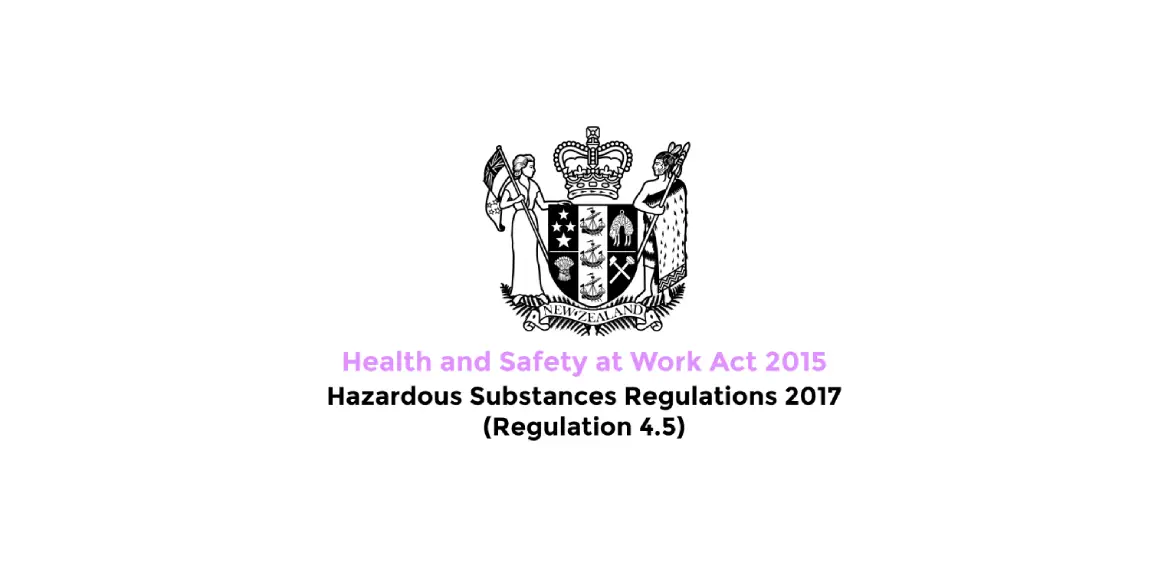The Hazardous Substances Regulations 2017 of New Zealand is a comprehensive set of rules designed to manage the risks associated with hazardous substances. These regulations emerged as part of the Health and Safety at Work Act 2015, reinforcing New Zealand’s commitment to ensuring the safety and health of all individuals in the workplace. One regulation that warrants close examination is Regulation 4.5, a crucial provision concerning training of staff to ensure that compliance certification for locations storing, using or manufacturing hazardous substances can be completed.
Regulation 4.5: Compliance Certification Requirement
Regulation 4.5 is primarily concerned with the necessity of obtaining a compliance certificate for certain hazardous substance locations. These locations are defined as any area where hazardous substances are manufactured, used, handled, or stored. Compliance certification ensures these locations are operating under the safest possible conditions, reducing the risk of hazardous incidents and protecting the wellbeing of individuals and the environment.
Specifically, Regulation 8.1 states that a compliance certificate must be obtained if hazardous substances exceed the prescribed quantities in a particular location. The exact quantities triggering this requirement depend on the hazard classification of the substances involved, including flammables, explosives, toxics, and corrosives.
Compliance Certification Process
The compliance certification process is a vital part of enforcing Regulation 4.5. It involves an inspection by a certified Compliance Certifier, who examines the hazardous substance location to ensure it meets the requisite safety standards. This examination covers several key areas, such as the proper storage and handling of hazardous substances, adequate ventilation, the presence of emergency equipment, and proper training of staff.
Once the inspection is completed, if the location meets all the necessary safety standards, a compliance certificate is issued. The certificate is valid for a specified period, after which a re-inspection is required to maintain certification. This ensures that businesses continue to uphold the necessary safety measures over time.
Importance and Implications of Regulation 4.5
Regulation 4.5 holds significant importance in ensuring the safe management of hazardous substances. It promotes the culture of safety, urging businesses to adopt best practices to protect their workers, the public, and the environment.
Non-compliance with Regulation 4.5 can lead to severe repercussions. Businesses may face penalties, including significant fines and imprisonment. Furthermore, non-compliance may lead to accidents or incidents involving hazardous substances, which could result in harm to people, property, and the environment. Thus, understanding and adhering to Regulation 4.5 is vital for any business dealing with hazardous substances.
Conclusion
Regulation 4.5 of the Hazardous Substances Regulations 2017 of New Zealand is a critical provision that safeguards the health and safety of workers, the public, and the environment. By requiring a compliance certificate for locations handling certain quantities of hazardous substances, the regulation ensures these locations operate safely and responsibly. The compliance certification process, overseen by certified Compliance Certifiers, enforces this requirement, ensuring businesses are accountable for their actions.
In an era where hazardous substances are commonplace in many industries, Regulation 4.5 serves as an essential tool for reducing risk and promoting safety. It is incumbent upon businesses to understand and adhere to this regulation, not only to avoid penalties but also to protect the wellbeing of all individuals involved and the environment. With this in mind, Regulation 4.5 stands as a testament to New Zealand’s dedication to ensuring a safe and healthy working environment.

